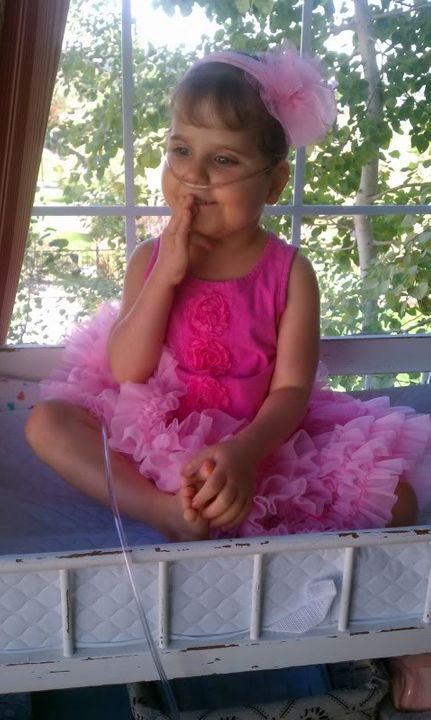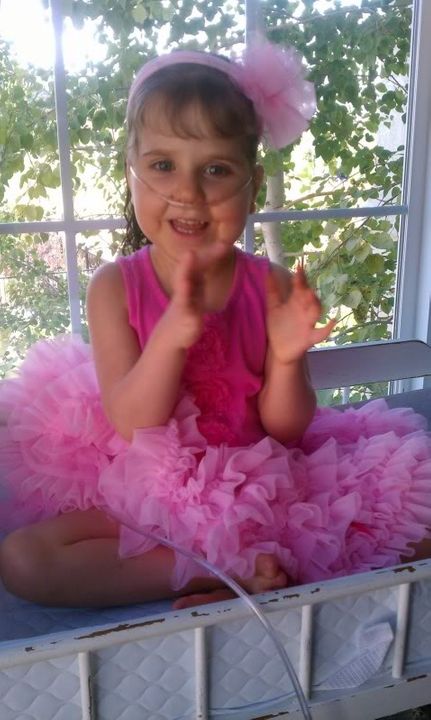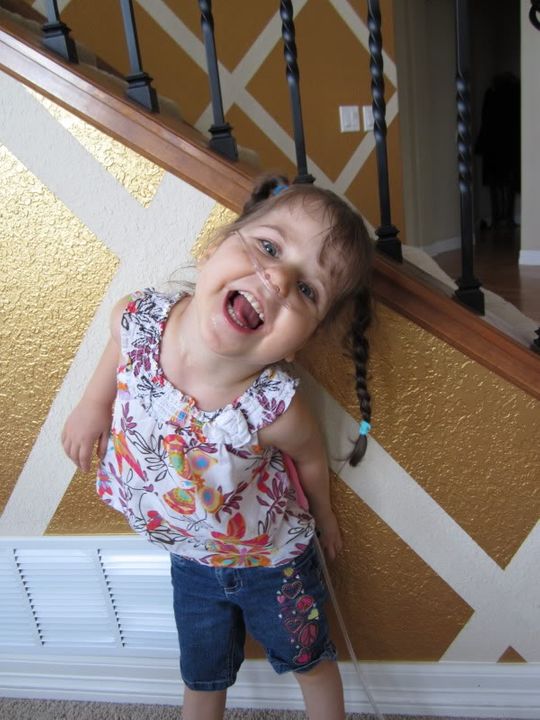
As usual, a lot has happened since Ella turned 4 years old.
Jobs started for both of us and have kept us busy. We’ve both had to travel, so it has required coordinating with each other to make sure one of us is home with Ella in the evenings.
What about during the days? Well, Ella helped us interview nannies and therefore, she truly made the final decision. Ella’s new companion is Kimmie. They’ve been having a great time together. And Kimmie kept a record of their first few weeks together on her own blog. Of course now that the college semester started in full swing, the updates slowed down. Gee, I think I can relate to that part! In any case, even if you only see the first few entries, it will give you a taste of their relationship; they’ve taken quite well to each other. Have I mentioned what a blessing it is to have found someone that we trust with our miracle daughter?
The past several weeks, Ella has continued to do wonderful. We did experience one week where her health began to deteriorate – she was struggling with taking feeds (lots of retching). Fortunately, an increase in her daily dose of Miralax along with an extra dose of water each day did the trick. We’re thankful that it was a quick fix and nothing major. At the same time, we recognize that having to increase her daily dose of Miralax is not necessarily a good sign and may mean future GI issues in the future. Even this week, we’ve seen signs of increased fussiness at times. We’re still trying to determine if it is purely behavioral or if there is anything physical that we need to explore. For now, still holding onto hope that she’ll continue to do well and that it is not the start of a bad streak.
Her weight gain has been steady – up to nearly 32 pounds! Therefore, the dietician asked us to back off some of the calorie-fillers we were using in her blended diet. We reduced the DuoCal from ½ cup per day to ¼ cup per day. Instead, she was still concerned that Ella might need more protein in her diet to make up for the fact that we are not using milk as a base for her blended diet. So, we’ve added an additional 4-6 ounces of protein. It will be interesting to see how her weight tracks over the next several months. We’re scheduled to see the GI doctor and nutritionist in November.
The neuropsychology department received our paperwork early in the year, but they have a huge waiting list. They finally called and are booking appointments 3 months out! Apparently, you go for quite a long day starting at 8am on a Wed and have to go back exactly one week later at the same time. Since 3 months out was the holidays, I asked them if we could take a pass and they could call us back for to book January appointments. It just seems like the holidays are crazy enough without this curve ball. At that point, it will be interesting to see where Ella is at developmentally and get some insight from this specialty group. They not only look at her developmental progress and behaviors, but also take into account her brain injuries and give guidance on the best ways for Ella to learn.
We did go visit Ella’s pediatrician for her 4 year checkup. She received 2 vaccinations plus her annual flu shot. Boy, she sure screamed loud when I held her down while all three nurses poked her simultaneously. For a child that could not even muster a cry at birth, you’d be shocked to hear the amount of volume that can come from our little Bun! The pediatrician was so happy to see her progress – her weight gain and overall healthy appearance, but more than that, she was walking around the exam room and interacting with him socially more than she ever has before! He noted with a proud sentiment that this is the best he’s ever seen Ella. We still see the pediatrician 3-4 times per year, but this time we were told that pending any obstacles, we could wait until January!
Finally, another health care visit in August: the dentist. This was a first time for Ella. And because of her medical history and likely requiring sedation, I opted to make things a bit more simple and go with the Dental Clinic at The Children’s Hospital. Although when I arrived, I was informed that the systems were not truly connected. This meant that I still had to complete pages and pages of medical history, current medications, doctors she sees, etc. That was disappointing.
In the past, I’ve tried to call the Dental Clinic and have them proactively come over when Ella has been scheduled for a procedure, so they could take a look while she was under anesthesia. We’ve learned all too well to opt in for clustering our care for the Bun. Unfortunately, they would always tell me that this was not possible since Ella was not an established dental patient. With her developmental delays and oral aversion, I went to this appointment knowing that they would not make much forward progress, but the goal for me was clear: just get in the system. This way, I can call in the future to try and cluster Ella’s care.
This is why I chuckled when the dental assistant came to greet us and began rattling off her list of things that would be accomplished at the appointment. Little does she know! She has not met the Bun – the Bun is in charge here and will not stand for this monkey business for one second. Even when it came to getting a height and weight, Ella started to melt down and exert her authority in the matter. Finally between me telling her and her unsuccessful attempts to explain to Ella what would be happening (I tried to inform her that Ella does not understand), I requested that I speak to the dentist before we tried to accomplish any of the items on her list!
Fortunately, the dentist picked up on the situation right away. She asked me to hold Ella on my lap, facing me with her legs wrapped around my waist. Then the dentist came close to me so our knees were touching. Once the dentist was equipped with her gloves, mask and tools, I leaned Ella back and the high pitched screaming and fighting ensued. The dental assistant and I worked on holding her down; I had her arms and legs while the dental assistant tried to hold her face in place.
The dentist glanced around her mouth briefly, brushed her teeth and swiped some fluoride on her teeth in an expedited manner. When that was done, she reached for her card and asked that I give her a call to schedule xrays, exam and cleaning for the next time that Ella has a planned procedure! And there you go…our goal was accomplished. We are in the system and there are notes on her record that maybe going this direction is a better move!
The good news: most of the kids that are 100% g-tube fed don’t have any cavities. She said Ella’s teeth looked good, but would love to clean them and get a set of initial xrays so we have a baseline for the future. Also, she told us to use fluoride toothpaste at home: it would take Ella swallowing 3 tubes of toothpaste before there is any harm from ingesting the fluoride. Moreover, to use the toothbrush when it is dry with a swipe of the toothpaste (wetting it creates more bubbles/foaming and is less effective for Ella’s fast brushing we do each day). Finally, we brush Ella’s teeth in the morning. She simply recommended that we switch to night time, if Ella ever starts eating by mouth. Overall, it was a good visit and I’m just glad that the dentist picked up on the situation quickly and didn’t try to push Ella any more than we already did with this first-time experience.
With summer coming to an end, the school year officially started. Ella’s doctors still want her to be home-bound and not exposed to other children for health reasons. So the school district came to our house to complete Ella’s IEP. The best news: it was an easy meeting because the same ECSE (Early Childhood School Educator) from last year is back! Ella loves her; they have a great relationship. Since Ella is still in preschool with the same ECSE, not much had to change from last year to this year. This made it an easy step. Unfortunately next year, we have to switch schools and staff with entering Kindegarden. This will likely mean bringing the ARC advocate back out to fight for what is right for the Bun!
We did get a new stroller/wheelchair that accommodates Ella’s oxygen tank and will continue to suit her better as she gets bigger. Only a few bummers: no shade for covering her noodle as we’re walking around (she doesn’t tolerate hats or sunglasses), no tray across the front (use it to prop a video player for her and/or when we’re feeding), and no cup holder for Mom’s diet coke. Oh well, so far it seems that she likes it.
We organized Ella’s play area – – seems like we need to modify it to better suit her needs every 6 mos or so. Here’s the latest setup!

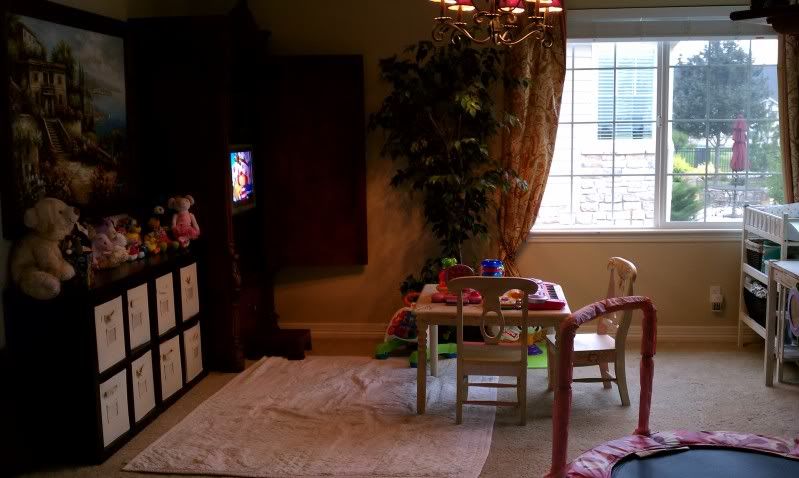
Some of the fun things that Ella loves to do these days: go on walks around the cul-de-sac with Dad and/or her physical therapist, hang out and walk around on the deck with the dogs, learning to walk up/down stairs (still holds our hand or the railing), learning to run (getting fast), learning to jump.
One huge thing: her star stacker is one of her favorite toys: she first learned to place the stars on it (which was huge), but absolutely loved when it would play songs. One way to do that: hit the top button with your finger. She loved it so much that she would grab anyone’s hand that was nearby and prompt you to push the button for her. Now, she learned how to isolate her finger enough to do it herself! She’s also tolerated more tactile stimulation – so although she doesn’t love to touch new things her therapist puts in front of her, she’ll touch it to move it away or throw it off the tray (we’ll take it for now!)!
One major highlight in August: Grandma Eusey came to visit. She had a great time hanging out with Ella and relaxing. We also went to Copper Mountain for a getaway as well as went to the zoo!
Also, Josh recently celebrated his 39th birthday…the last year of his thirties. Make it count! We went to a nice dinner with Grandpa @ Capital Grille, Josh’s favorite restaurant.
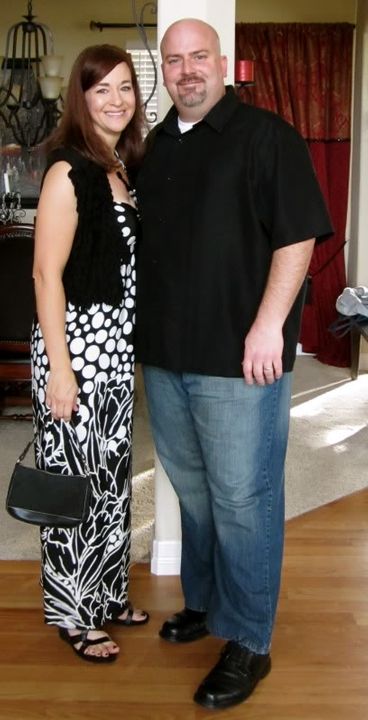
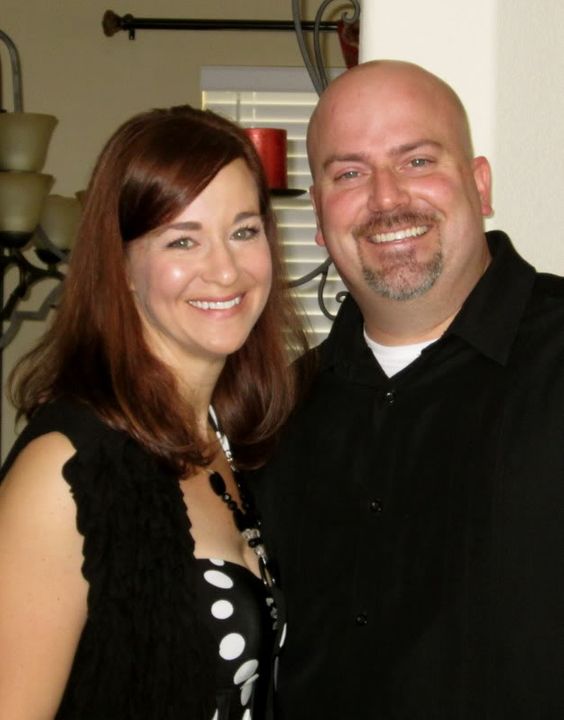

On another note, I have to share that although I do not post nearly as often as I used to in the past, God still continues to use Ella’s story in a powerful way. Over this summer, I have had countless parents contact me via the blog and share about the hope that Ella’s smile brings to them while they are in the midst of a risky pregnancy or watching their baby fight for life in the NICU. I was even fortunate enough to talk on the phone with one expectant mom: her baby was diagnosed with CDH and she was trying to explore the best options, but was told that her baby would likely not live and she was filled with worry. Now, she is planning to go to Florida to deliver her baby with Dr. Kays and is filled with hope. Just amazing…
Speaking of hope, I mentioned that I’d been traveling a bit for work. This one story in the Spirit Magazine on a recent Southwest flight caught my attention and had me choked up. I will type out the article below for those of you that are interested in reading it, but even if you don’t read it, the last paragraph was a great summary:
“Often people will ask Evie’s family about what kind of life she will have and how much she will be able to do. The answer is that no one has a clue. Evie, they say, is just going to be Evie, the little girl that taught them all to slow down and enjoy people, to put their trust in God and to appreciate each and every moment.”
I’m pretty confident that we could replace Evie’s name with Ella’s above and the sentiment would be just the same.
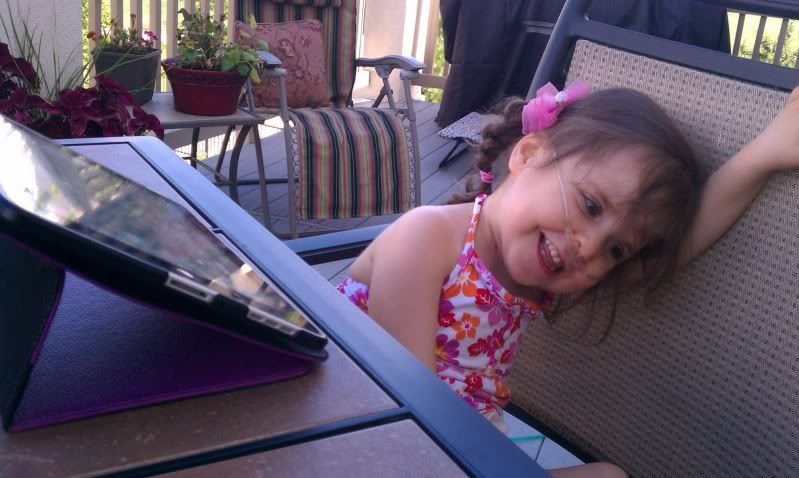
Holding Onto Hope (Sara Burnett, writer for the Denver Post)
There are some things for which no pregnancy book can prepare a mother and father. Seven months after their unborn child received a lethal diagnosis, John and Lindsey Elsaesser welcomed Evie into their lives. Two years later, she’s still fighting.
On an overcast Sunday afternoon last September, Evie Jayne Elsaesser sat in a booster seat atop the kitchen counter. In front of her was a polka-dotted birthday cake with a “1” etched in pink frosting.
Lindsey and John Elsaesser, Evie’s mom and dad, had hurried home from church that morning to fill a few hundred balloons using the helium tank they’d rented. The goal was to have 365 of them tied up throughout their 1,400 square-foot Omaha, Nebraska, house, but the balloons kept exploding and they’d run out of time. Despite the shortfall, bouquets of nearly 50 balloons each floated about the living room, kitchen and garage. More were tied to the banister inside the front door, which stood open for arriving guests.
At the peak of the party, Lindsey led the gathering of 150 or so well-wishers in a round of “Happy Birthday”. As voices rose, Lindsey scanned the room, locking eyes for just a moment with her mother, Micki, who stood to the side, sobbing.
This was no typical first birthday party, and there was cause for the hoopla and swelling hearts: Evie, a resilient one-year old with a quick smile, was not supposed to have lives to see this day. Evie’s mom was a junior at the University of Nebraska when she met John in 2003. She was 20 and tired of dating: he was 24 and eager to settle down. “His stability was what I liked most about him,” Lindsey recalls. “He was out of college, he wasn’t dating around. And my family loved him. That was a big thing.”
They were married about 15 months later and, in May 2007, had their first child, Lyla. Not quite two years after that, Lindsey discovered that she was pregnant again. “We wanted our second child to be born within three years of Lyla, so they would be close,” she says.
Throughout her pregnancy, Lindsey pictured her two daughters growing up as best friends. It took just one phone call to transform the young mother’s dreamy vision into a parent’s worst nightmare. “John was with my mom, helping her with some landscaping,” Lindsey says, recalling the events of May 22, 2009, while sitting on a stool in her kitchen this past May. “That morning I’d called the doctor’s office to find out if they’d heard anything yet about my ultrasound.”
Dr. Robert Bonebrake, a specialist in high-risk pregnancies, returned her call just before noon as Lyla, who had turned 2 three days earlier, sat in the living room watching cartoons. Leaning over the kitchen counter with pen in hand, Lindsey listened carefully to the M.D.’s diagnosis before asking him to slowly spell it out: osteogenesis imperfecta. As he detailed the rare, genetic bone disorder, she scribbled her notes through a cascade of tears.
When John got home, he found Lindsey still sitting on the same kitchen stool. As Lyla played nearby, oblivious to her parents’ heartbreak, Lindsey repeated the words Bonebrake had uttered, words for which no parenting book can prepare a mother and father: “It’s a lethal diagnosis”.
“We just hugged and cried,” remembers John. Lindsey eventually read him her notes. “After that,” she recalls, “there wasn’t much more to say.”
“These following weeks are going to be hard. The closer I get to giving birth, the closer I am to having to let Evie go. I don’t know how I will do that.” – From Lindsey’s first blog post on Evie, on June 9, 2009.
For such an uncommon disorder, osteogenesis imperfecta – often referred to us as “brittle bone disease”, because its most well known characteristic – is familiar to almost any consumer of popular culture. Most memorably, it afflicted the villainous Mr. Glass (played by Samuel L. Jackson) in M. Night Shymalan’s hit 2000 thriller Unbreakable.
Nearly two months before Evie was diagnosed with OI, Lindsey at 12 weeks pregnant, had a routine ultrasound. But as she lay in the exam room that day, it was clear that something wasn’t right. “When I was pregnant with Lyla, the ultrasound tech talked the whole time, pointing out Lyla’s head and feet on the screen,” Lindsey recalls. “This time she was quiet.” When the tech left the room midway through the exam, Lindsey called John, who was finishing up a nursing-school clinical rotation at an adjacent hospital. He arrived just before the obstetrician Lindsey was seeing that day came in the room to report his findings: Evie’s hands, feet and nasal bone were undetectable in the ultrasound. They needed to see a specialist immediately.
The next day John and Lindsey met for the first time with the distinctly named Dr. Bonebrake. He confirmed that their unborn child had skeletal dysplasia, a term that encompasses several bone disorders. “Don’t Google it”, he warned. “There are too many types and variables.”
Bonebrake sent Evie’s ultrasound images to the International Skeletal Dysplasia Registry, at Cedars Sinai in Los Angeles, where experts determined that she had type II osteogenesis imperfecta, the most severe form of the disease. Most babies diagnosed in utero with Type II OI die during childbirth or shortly thereafter. If Evie lived, the Elsaessers were told, it would likely only be for minutes.
When Lindsey was 20 weeks pregnant, Dr. Bonebrake broached the subject of terminating the pregnancy. “I don’t do terminations,” he said, “but…” Before he could finish, Lindsey stopped him. “We don’t want one,” she said. By then, she and John had learned that the baby she was carrying was a girl. They’d even named her Evie, meaning life. “I wanted time with her, even if it was just while I was pregnant, “ says Lindsey. “I thought, If her life in my womb is all I’m going to have, I’m going to love that time.”
“I have heard that it is in the hard times when you experience the love of God the most intensely. In my deepest pain, I know that God is holding me together and his heart breaks along with mine.” – From Lindsey’s blog, June 11, 2009.
For all they have been through, life at the Elsaesser house is surprisingly normal. The lawn in the front of their home in an upper middle class neighborhood is perfectly manicured – a testament to Lindsey’s landscaping skills. John, who will soon earn his bachelor’s degree in nursing and is an RN at the Nebraska Medical Center, has the weekend off work, freeing them for Lyla’s soccer game and a family birthday party at a local pizza buffet to celebrate Lyla’s fourth.
Always tech savvy, Lindsey had become a fan of social media outlets like Facebook, and in the weeks after receiving Evie’s diagnosis she began reading the blogs of moms who had been through a similar experience.
As word of Evie’s prognosis spread throughout the Elsaesser’s circle of friends, church members and extended families, Lindsey was inspired to create a blog of her own – to share updates. “It was a way of letting people know how Evie was doing, and how we were doing,” Lindsey says. “In those last few months, because I was showing, we struggled with the question of who to tell about her prognosis. I figured if it was just someone at the gas station who I’d never see again, I didn’t say anything. But we told our neighbors, because I didn’t want them bringing us baby presents.” The blog also gave Lindsey a means to explain the situation accurately and in detail, but without having to worry about breaking down as she talked about it. “We could go to church and it would be fine,” she says. “Everyone already knew, so nobody asked.”
Unexpectedly, hundreds then thousands of people were soon regularly reading the blog, people Lindsey went to high school and college with but hadn’t spoken to in years, patients from her father’s dental practice, even strangers from around the world. Emails began arriving from folks in similar situations – a pregnant woman in California also coping with a lethal diagnosis for her child, a mom in Hong Kong whose daughter had skeletal dyplasia.
As the weeks passed, Lindsey’s writing routine got into a groove. After Lyla had fallen asleep and John had gone to bed, she’s retired to a desk in the upstairs room that would later become Evie’s bedroom, where she’d post updates and respond to emails. In a way she could not have imagined, this ritual sharing helped to center her, providing, as it grew in complexity and reach and emphasis on her deep religious faith, the solace and catharsis of a confessional.
Outside of the uniquely modern intimacy of the blog, it has been difficult for Lindsey to let down her guard. Still, recently, she sat on her sofa and wept as she recalled some of her greatest worries from those months before Evie’s due date. What would be worse, she asked herself, if she dies while I’m pregnant or if she dies in my arms? “The thing I lost sleep over the most was what would happen after she died,” Lindsey remembers. Like, in what outfit would they bury Evie? “I wanted to be the one to dress her and put her into the casket. I’m her mom. That should be something I do.”
On September 18, 2009, John and Lindsey checked into a corner room in Mehtodist Hospital’s high-risk ward, which is referred to as the “Princess Diana Suite”, for its size and above-the-bar amenities. A yellow butterfly hung from a wire on the door, an unspoken signal to nurses that this soon-to-be-born baby was terminal. As Lindsey went into labor, her family waited outside in the hallway. Every now and then her 21-year-old sister Kelsey would hold a stethoscope to the door, hoping for a telltale and miraculous, “Waaaaaaah”. Finally, little Evie obliged.
Her legs were bowed, her skin was pale, and her body felt limp, but she was bigger than John and Lindsey had expected – 6 pounds, 11 ounces, and 16.5 inches long – and she was alive. “At that point, we still thought there could only be moments,” Lindsey recalls. “So we just stared at her and told her we loved her.”
By the following morning, Evie’s skin had turned peachy in color and her breathing grew less labored – very encouraging signs, according to Dr. Brakebone and Evie’s pediatrician, Dr. Pat Steinauer, both of whom made visits. Later that afternoon, Steinauer called Lindsey’s cell phone with stunning news: He didn’t know precisely what form of skeletal dyplasia Evie was battling, but based on X-rays and tests, it didn’t look like OI, and, at least for the moment, didn’t appear life-threatening. Evie would be able to go home after-all.
The next day, Lindsey pulled out her laptop and shared the good news: The title of her brief post said it all: “Welcome Evie!”
“Lyla had to ‘check Evie’ every time she came to the hospital. She usually followed this by saying, “I think she’s working!” – From Lindsey’s blog, October 17, 2009.
Although they had to be extremely gentle with their precious new bundle, the nervousness and apprehension John and Lindsey experienced with Lyla, their firstborn, had all but disappeared. They took Evie to church and to the zoo, to the pumpkin patch and the park. Lyla said to anyone who would listen, “Evie’s my baby,” and she appointed herself assistant diaper-changer.
But they were far from unfetered. Dr. Richard Lutz, a pediatric geneticist at the University of Nebraska Medical Center, was working hard to figure out what was going on inside Evie’s little body. He shared X-rays and photos with experts across the country and entered Evie’s physical abnormalities – called “handles” – into a massive database of symptoms in the hopes of finding a match.
A break in the case didn’t happen until several weeks had passed. John and Lindsey were home with Evie when she was gripped by a seizure. They rushed her to the emergency room, where doctors drew blood and performed a series of diagnostic tests. There, buried in the results, was the smoking gun Lutz had been looking for: Evie’s blood lacked the enzyme that brings calcium and phosphorous together to form bone – a clear indication that she suffered from hypophosphatasia, a different and also rare disorder that softens bones and teeth.
Lutz was acquainted with the disease, but none of the babies he’d monitored lived long enough to experience seizures. He went back to his computer, certain he recalled about a form of the disorder that triggers seizures. Sure enough, he found an article written nearly 30 years earlier by a German physician. The seizures confirmed that Evie’s hypophosphatasia was the severest kind. Without treatment, about half of those affected by it die within a year of diagnosis. Lutz estimated that Evie had five or six months to live.
“As we were driving down Center Street tears started streaming down my face. I hadn’t driven down that part of Center Street since I was pregnant with Evie and we had visited the cemetery to get familiar with where we’d lay her to rest.” – From Lindsey’s blog, November 15, 2009.
It was Lutz who informed the Elsaessers of a clinical drug trial that had begun about one year earlier. By the time John and Lindsey learned of it, fewer than a dozen children were participating. They all were doing well, with no reports of substantial side effects. But none of the children had seizures like Evie did. If she were accepted into the trial, they’d be in uncharted territory.
John and Lindsey spent several days poring over pharmaceutical fine print, going back and forth with Evie’s doctors about the pros and cons of putting her on the medication. When it was clear that there were no options, they told Lutz they were in. Treatments began about a month later.
In the meantime, doctors determined that Evie’s lungs weren’t keeping up with her growing body and sent the Elsaessers home with oxygen gear – a tube that attached to Evie’s nose, wrapped around her ears, and snaked to a machine they placed in the bathroom. Because Evie had to be on oxygen 24/7, the tube was long enough to stretch to almost every room in their split-level home.
Evie’s condition demanded that one of her parents always be with her. When John and Lindsey went out with friends, she came along, secured in a sling against Lindsey’s body, with John nearby shouldering a portable oxygen tank. In March 2010, 5-month old Evie joined the couple when they celebrated their fifth wedding anniversary. “We went to a movie, but they weren’t going to let Evie in because it was R-rated,” Lindsey remembers, laughing.
Despite a house littered with medical equipment and a calendar filled with doctor’s appointments, the couple persisted in giving Evie and Lyla a worry-free childhood. They worked just as deliberately to sustain their marriage. John and Lindsey knew the stress of caring for a terminally ill child, coupled with financial worries and battles with insurance companies, could cause a couple to drift apart. But for them, it engendered the opposite effect. At night, they spend time talking alone about their days, about how Evie and Lyla were doing, and asking each other, “How are you feeling?” and “Are you OK?”
They made it a point, too, to lavish special attention on Lyla. For months, she didn’t seem to notice that there was anything different about her sister, not even when other kids would ask Lindsey about Evie’s oxygen tube or wonder aloud why they had to be so gentle around her. Still, Lindsey spent hours rehearsing in her head what she’d say when Lyla finally felt the need to know.
Then one morning, Lyla asked her mother to remove the tube from Evie’s nose. Lindsey said she couldn’t. “Why?” Lyla asked. Nervously, Lindsey took her oldest child’s hand in hers, and together, they touched each other’s arms, knees, fingers, and elbows. “These are bones,” she explained, “and God made you and me with strong, hard bones. He made Evie with soft ones, so that’s why we give her shots – to help her bones get strong.” “Oh,” a disinterested Lyla responded. “Can I watch ‘toons now?”
“She is still on oxygen, and has been eating and sleeping much better since that started. I can definitely tell she has grown, so hopefully she will start gaining weight also. I celebrated the end of the week with an apple fritter and en enormous Diet Coke on the way home…It was heavenly. Oh, the little things.” – From Lindey’s blog, January 3, 2010.
Lindsey sits on the couch one late afternoon in late spring, a yellow spiral-bound journal in her lap. John has taken Lyla to the grocery store, and Evie is playing on the floor of the living room with a doll whom Lyla has affectionately named “Little Baby”. At 20 months, Evie is so accustomed to her oxygen tube that when it falls out – from wrestling with Harry, the Elsaessers’ new puppy – she guides it back in, herself.
Lindsey bought the book she’s paging through to diarize Evie’s birth. “Since those could have been her only days, I wanted to remember everything,” she says. The book has since become a “health journal”, the place where Lindsey wrote down every doctor’s appointment, the name of every nurse, every medication. “I was really neurotic about it for a long time,” Lindsey says, turning the pages and reflecting on the ups and downs of that first year. “I guess it was just that element of being new to the world of the medically fragile; I didn’t know where things were going.”
One of those tormenting twists came in 2010. The journal entry starts with a simple: “Feb 5 – RSV”.
Evie was nearly 5 months old when she was diagnosed with the quite commonplace respiratory syncytial virus, which, though easily treated in healthy children, poses extreme danger to babies like Evie, with complex health issues. In a matter of days, Evie’s breathing became so strained her doctors out her on a ventilator in the pediatric ICU.
Five months later, the Elsaesser’s were at Children’s Hospital and Medical Center in Omaha, this time for major surgery. As a result of her hypophosphatasia, the plates in Evie’s skull has fused together too quickly, putting pressure on her brain and causing her head to take on a cone shape. In a three hour procedure, surgeons disengaged the plates, lodged separators between them, and stitched her back up, leaving a scar skin to a seam of a baseball encircling her shaved head. In recovery, Evie’s face swelled so dramatically that she couldn’t open her eyes.
“It was awful. Her nose looked teeny weeny on this enormous head. I would take a cold, wet rag and put it on her face to try and get the swelling down,” remembers Lindsey. “When the pain came, she would lie in her crib and cry, ‘Mamamamamama’. She couldn’t see me, but when she heard my voice she would reach up and move her arms around until she was touching me.”
“Hi Friends, where do the weeks go in the summer? I tucked the girls into bed tonight to the smell of chlorine hair and sweaty kid. Must have been a good day.” – From Lindsey’s blog, June 27, 2011.
Early this summer, John and Lindsey uncluttered the house so they could put it up for sale. It’s time, they think, for a ranch-style home, one that Evie can better get around in. Still hanging in the kitchen is the yellow butterfly that once adorned the hospital door, as a symbol of Evie’s delicate mortality. Today, it’s a constant, sunny reminder of how far they’ve come.
Without treatment, no child with Evie’s diagnosis has lived longer than 18 months. This month, she will turn 2. Lindsey and John have yet to decide how they’ll mark Evie’s birthday, but they like to joke that the reason they’re selling the house is the need to accommodate a bigger party.
And there is much to celebrate. X-rays show Evie’s bones are growing stronger. And her seizures seem to be under control. A recent surgery was performed to help straighten her feet. Finally, the Google calendar Lindsey uses to keep track of all Evie’s doctor appointments is showing weeks where there are none at all.
In this household, every new stride has significance. When, for the first time, Evie hit the growth chart – a formal indicator that she is no longer below the 0 percentile for children her age – Lindsey texted everyone in the family and posted the breakthrough on the blog. Though she is behind other kids her age in talking, her favorite word is Lyla, which she pronounces in one excited burst as “LylaLylaLylaLylaLylaLyla.” Earlier this summer, doctors said she no longer needed oxygen, and Evie took her first steps. When the family sits down to a meal and holds hands to give thanks, Evie reaches out her hands, too.
Dr. Lutz calls her case among the most satisfying he has ever been involved in. “There’s nothing more pleasurable than seeing your patient get better,” he says. The maker of Evie’s drug treatment has promised that no matter the results of the trial, each of the children in it will be allowed to continue receiving treatment as long as they live. How long that will be, no one knows. All you can do is look at the trend line, Lutz says, and Evie’s looks good. “What I see is that she is catching up. Not just progressing,” he says, “but catching up. To me that is a sign that she is innately OK.”
Often, people will ask Evie’s family about what kind of life she will have and how much she will be able to do. The answer is that no one has a clue. Evie, they say, is just going to be Evie, the little girl who taught them all to slow down and enjoy people, to put their trust in God and to appreciate each and every moment. “Every day, no matter what happens,” Lindsey says, “it’s awesome.”
